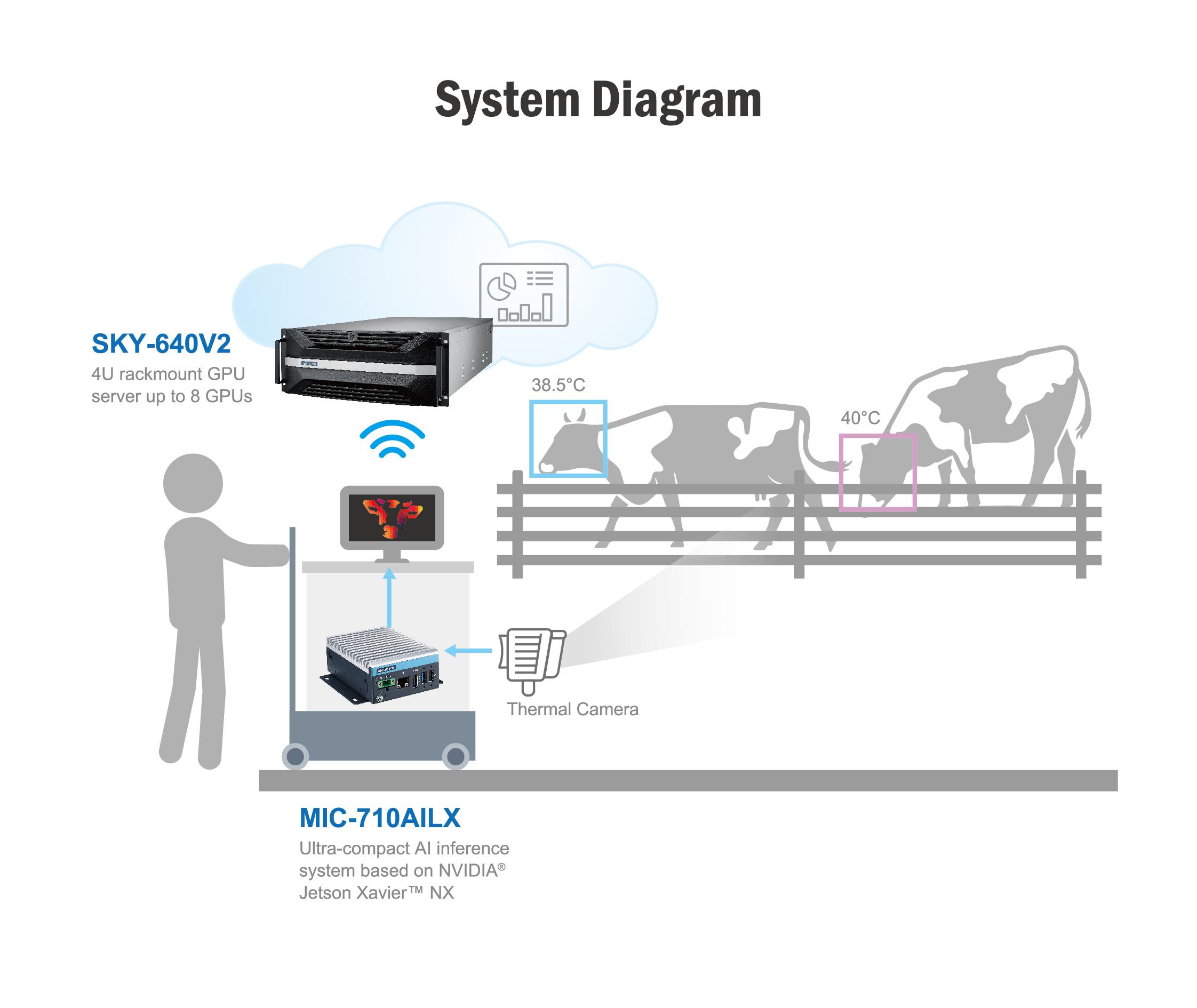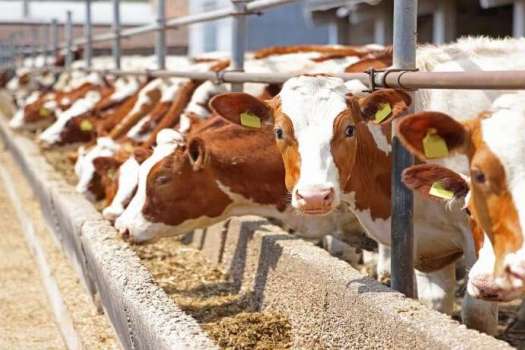AI-Based Early Detection System for Livestock Health Management in Dairy Production
Background Information
The use of artificial intelligence (AI) in livestock health management has revolutionized the dairy production industry. Farmers have struggled to identify and take timely action against animal diseases that threaten the lives of their livestock and significantly impact dairy production and food security. However, with AI-based early detection systems for livestock health management, farmers can easily identify sick cows and take prompt action to prevent further spread of disease. The Advantech system is designed to check the body temperature of each cow using AI and infrared vision. The system is easy to deploy, provides daily scanning of farm animals, detailed reports, and access to animal health specialists. The potential for future expansion to identify growth, feeding, and environmental conditions makes it a game-changer for the industry, improving the lives of farmers, their livestock, and the overall food security of their communities.
The dairy production industry has long faced the threat of animal diseases that can quickly spread and cause significant livestock and economic losses. Not only do these diseases threaten the lives of livestock, but they also have a severe impact on dairy production and food security. Farmers have always been challenged with the task of identifying sick animals and taking timely action to prevent the spread of disease. However, with the help of artificial intelligence (AI), farmers can now use an early detection system to identify sick livestock and take prompt action to prevent further spread of disease.
System Requirements
In dairy production, AI-based early detection systems are a game-changer because they provide a non-invasive method of detecting potential health issues in cows. Using AI and infrared vision, the system can identify the profiled cattle and record the heat emitted. This allows for the detection of elevated temperatures that may indicate a fever or illness. A noninvasive approach to livestock health management ensures that no unnecessary procedures are carried out, making it a more humane and ethical method.

System Description
Accurate livestock image data is crucial to implementing the AI solution. To construct the mobile solution, farmers can build a portable framework and then install the AI system and an infrared camera. Within a limited space, the compact MIC-710AILX can be installed. It is powered by an ultra-compact AI inference system with an NVIDIA® Jetson Xavier™ NX supercomputer. A USB 3.0 infrared camera is utilized to capture the images. Since infrared images are quite different from general images, the infrared camera collects the images and sends them to a SKY- 640V2 GPU training server. The AI model is then trained to identify livestock profiles through the stored infrared images and the model is subsequently deployed on the MIC- 710AILX. The infrared camera can detect livestock with elevated temperatures in real-time, allowing farmers to take prompt action such as quarantine to prevent the spread of disease.
Project Implementation
The AI livestock temperature solution is easy to deploy, and its simple architecture consists of an edge AI system with a USB 3.0 camera that can ensure real-time temperature records for dairy production. The benefits of this early detection system are numerous. The system provides monthly scanning of farm animals and detailed reports that can be accessed on a user dashboard. It also includes training and access to partner animal health specialists.
Why Advantech AI Solution
In the past, farmers were often late to identify sick animals, leading to significant economic losses. The AI livestock temperature solution provides an early warning and real-time reporting to identify unhealthy herds, ensuring prompt action can be taken to prevent further spread of disease. Moreover, the system's potential for expansion to identify growth, feeding, and environmental conditions means that it can do even more in the future to improve dairy production and food security.

